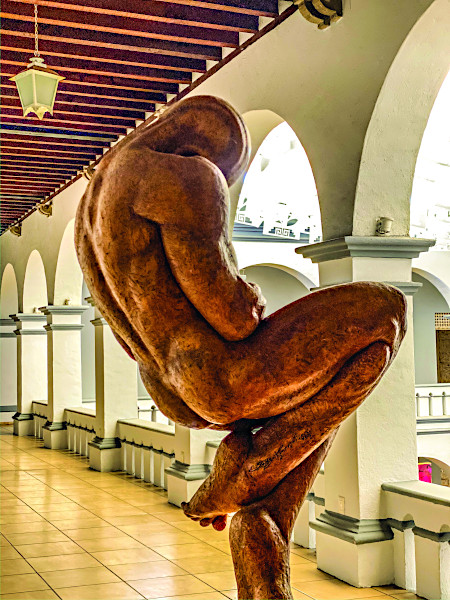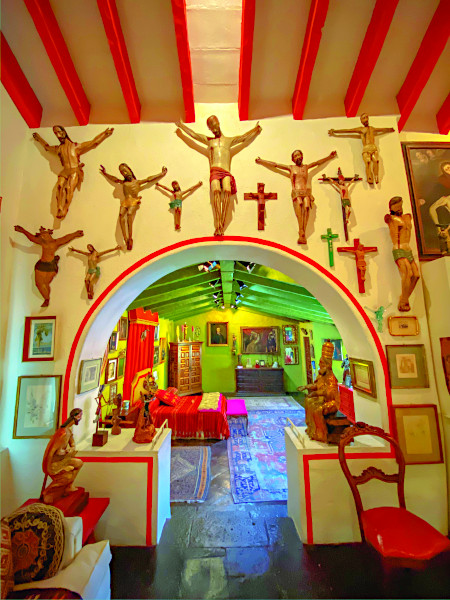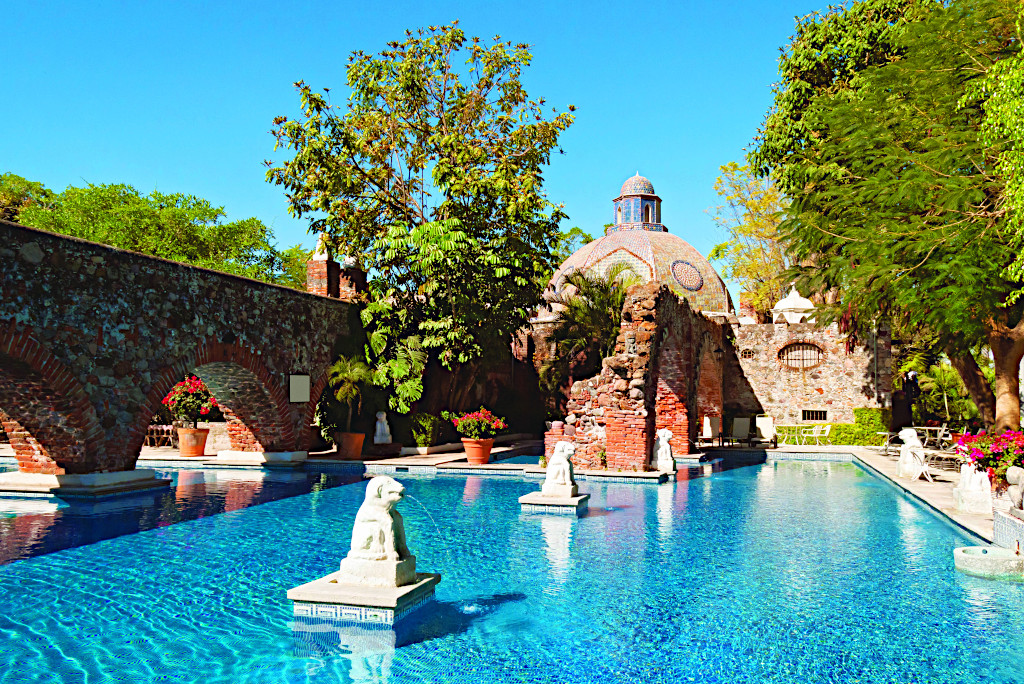Additional must-see historic sites in downtown Cuernavaca include the Catedral de la Asunción de María, a 16th-century cathedral and monastery complex, and Jardín Borda (Av. Morelos 271. Tel: +52-777- 318-8250), an estate built in 1783 and later used as a summer home by Emperor Maximilian and Empress Carlota. A stroll through the property offers a glimpse at early upscale life, and the formal gardens provide excellent photo opportunities.
I also enjoyed our visit to the Museo Morelense de Arte Popular (Morelos Folk Art Museum; Miguel Hidalgo 239, Cuernavaca Centro. Tel: +52-777-318-6200. www.sic.cultura.gob.mx), a small museum with free admission that showcases a colorful array of folk art from around the region. Nearby, we peeked into the Museo de la Ciudad de Cuernavaca (Museum of the City of Cuernavaca, Av. José María Morelos y Pavón Nte. 265, Centro. Tel: +52-777-314-5738. www.facebook.com), a lovely historic building that also offers free admission and hosts a smaller variety of local and regional artwork.

Museo de la Ciudade de Cuernavaca
Photo: LatinFlyer.com
After wandering the city museum’s galleries, we headed to a much larger, newer venue for a very different experience: The Museo Morelense de Arte Contemporáneo Juan Soriano (Juan Soriano Contemporary Art Museum of Morelos; Dr. Guillermo Gandara, Amatitlán. Tel: +52-777-6080-3351. www.mmacjuansoriano.org), which opened in 2018 as the city’s premiere space to view contemporary art. Its strikingly modern architecture and spacious indoor and outdoor exhibit areas provide an ideal backdrop for eye-catching exhibits. Helpful docents, guided tours, workshops and even children’s activities are among the offerings that make the facility even more user-friendly.
To learn about the region’s pre-Hispanic culture, plan a visit to Teopanzolco (Río Balsas S/N, Vista Hermosa. Tel: +52-777-314-1284. www./centroculturalteopanzolco.com), an archeological site just a few minutes by Uber from the city center. With ruins that date to between 1300 and 1521, the site features impressive pyramids as well as a strikingly modern cultural center, opened in 2017, that hosts exhibits and even musical performances.
For all the authentically local, culturally rich attractions that showcase the destination’s history, one of Cuernavaca’s most engaging cultural venues has foreign roots: Museo Robert Brady (Robert Brady Museum, Netzahualcóyotl 4, Centro. Tel: +52-777-318-8554. www.museorobertbrady. com). A U.S.-born art collector and member of a wealthy Iowa family, “confirmed bachelor” Robert Brady was born in the 1920s. In 1962, he bought a 16th-century former monastery in Cuernavaca and converted it into his home. The property soon became a showplace for his vast art collection, which was the result of years of globetrotting.
After Brady died in 1986, the home became a museum, kept largely intact as he had instructed in his will. Strolling through the living room, dining room, kitchen, and bedrooms, I was overwhelmed by the sheer quantity of artwork on display, from African tribal masks to a Frida Kahlo original (which was down for maintenance when I visited, but it may be up by the time you get there). Brady partied with the elite, including Peggy Guggenheim and Josephine Baker, who stayed in the fancifully decorated guest room, which seems almost out of a Disney movie.

Robert Brady House
Photo: LatinFlyer.com
We spent the next day in Tepoztlán, a small town that’s the most popular side trip for first-time visitors to Cuernavaca. The supposed birthplace of Quetzalcoatl, the legendary Aztec feathered serpent, Tepoztlán is a designated Pueblo Mágico (Magical Town) that attracts throngs of tourists, including energetic types who climb a steep trail to reach a hilltop Aztec pyramid that overlooks the town. We wandered the bustling streets, where vendors sell all types of arts and crafts, and sampled sweets at Tepoznieves (Av. Revolución 21, San Miguel. Tel: +52-739-395-5184. www.nieves-tepoznieves.com), an ice cream shop renowned for its large variety of imaginative flavors (the angel’s kiss, for example, is made with pine nuts, strawberries and mamey, a fruit produced by a tree that’s native to Mexico and Central America).
Among the most impressive sites we saw was the Ex Convento de la Natividad (Tel: +52-739-395-0255; www.inah.gob.mx), a 16thcentury former convent that now serves as a government-run museum and art gallery, with a surprisingly diverse variety of work on display in its dramatic halls.


